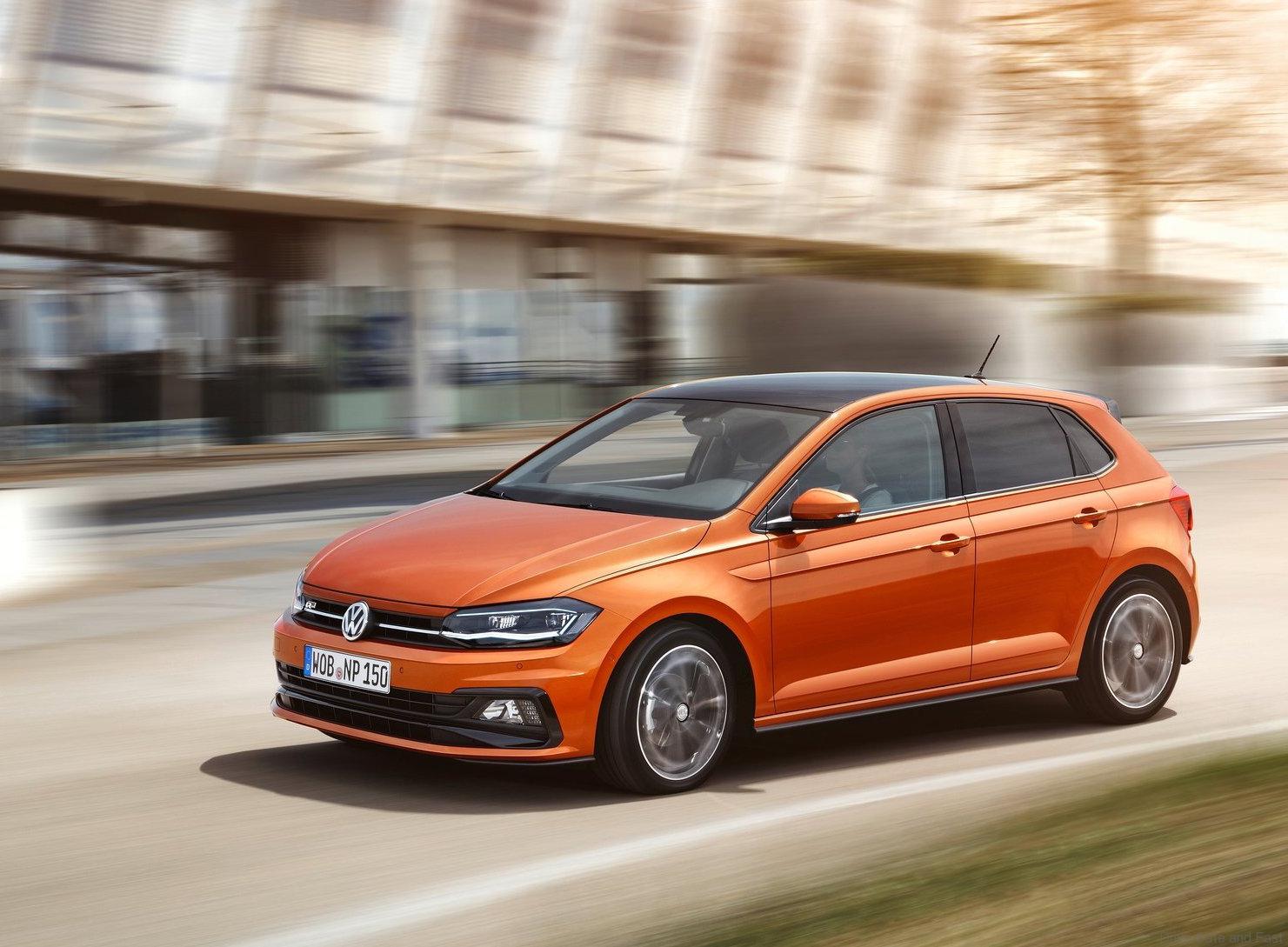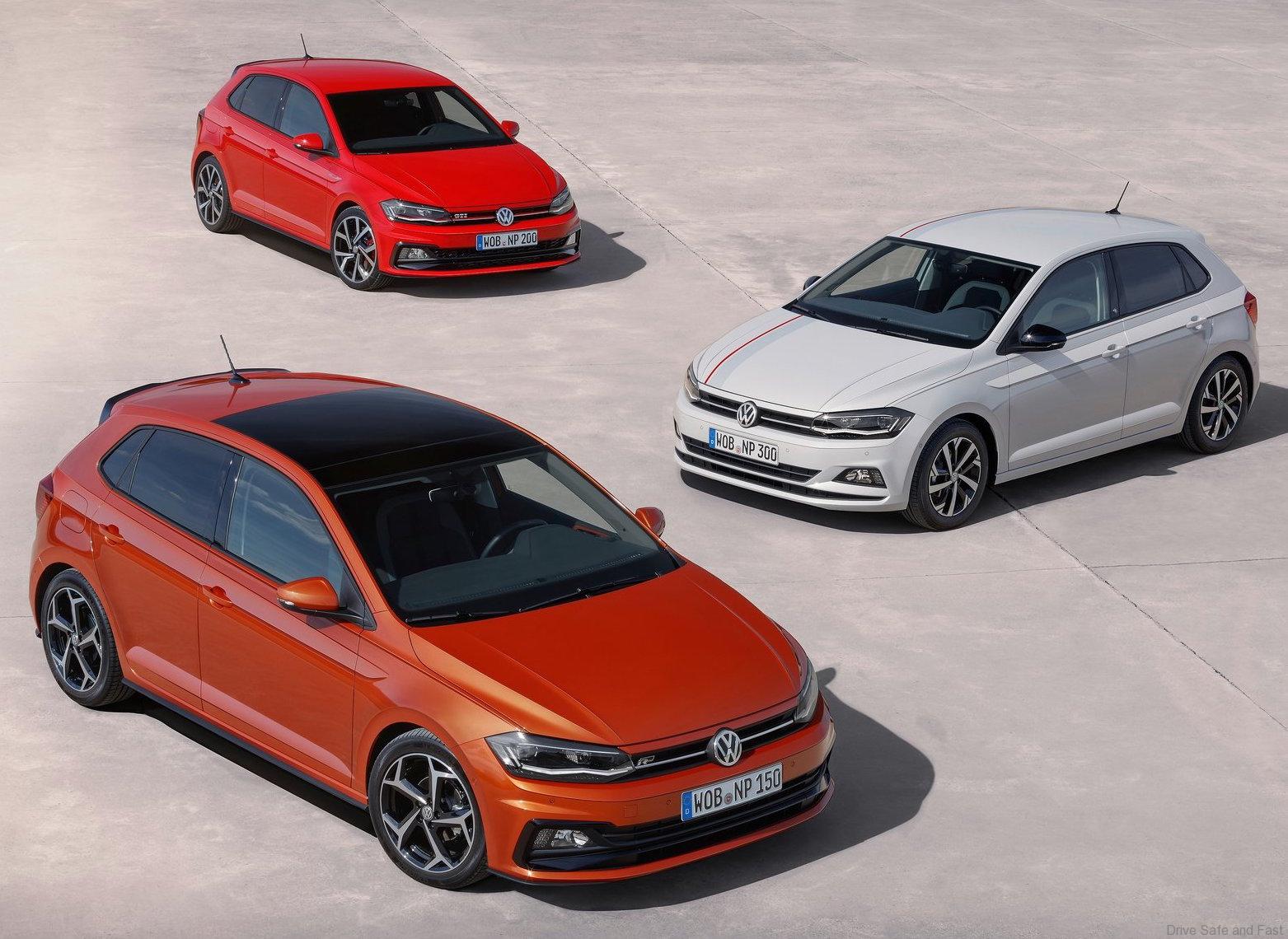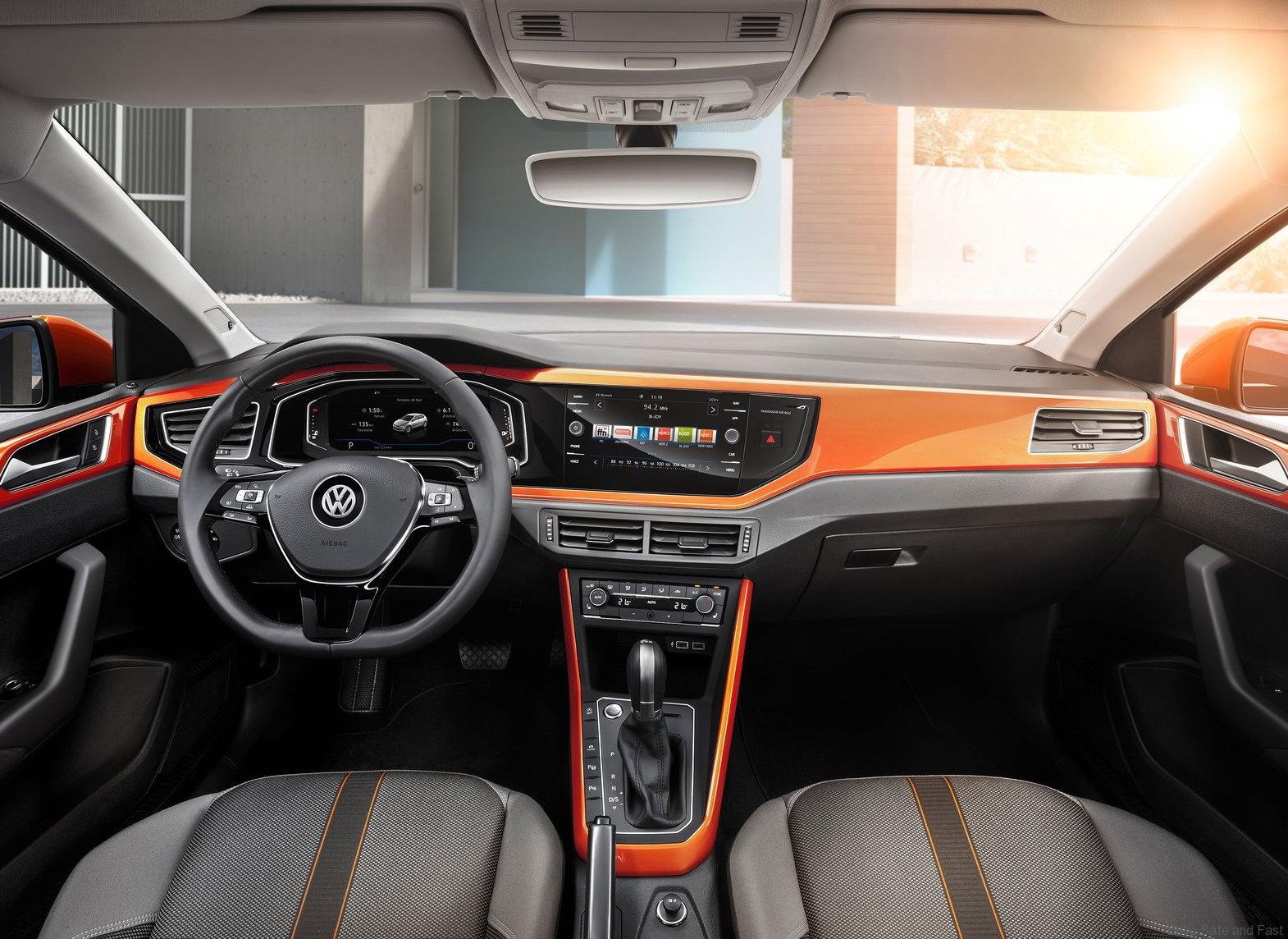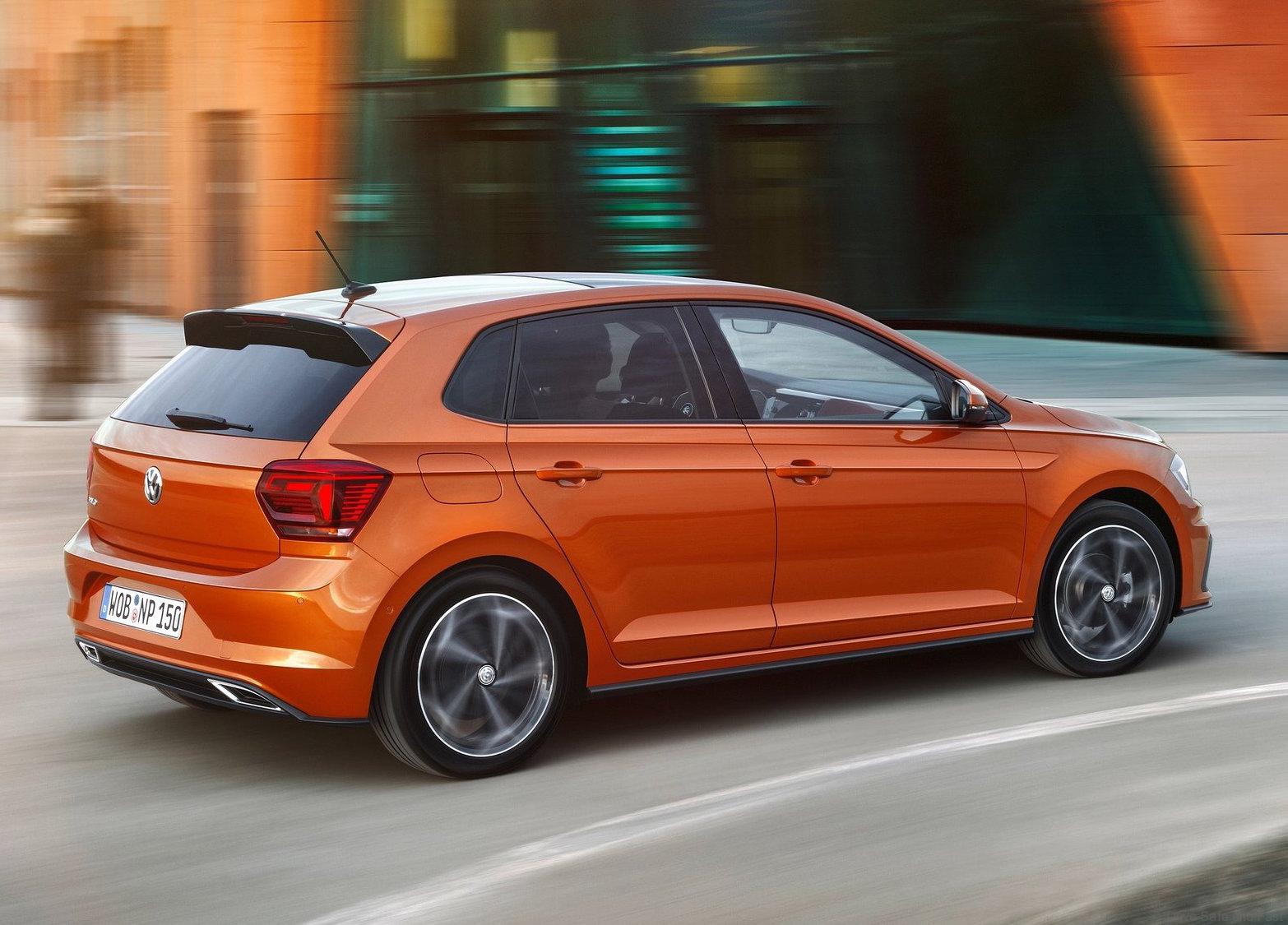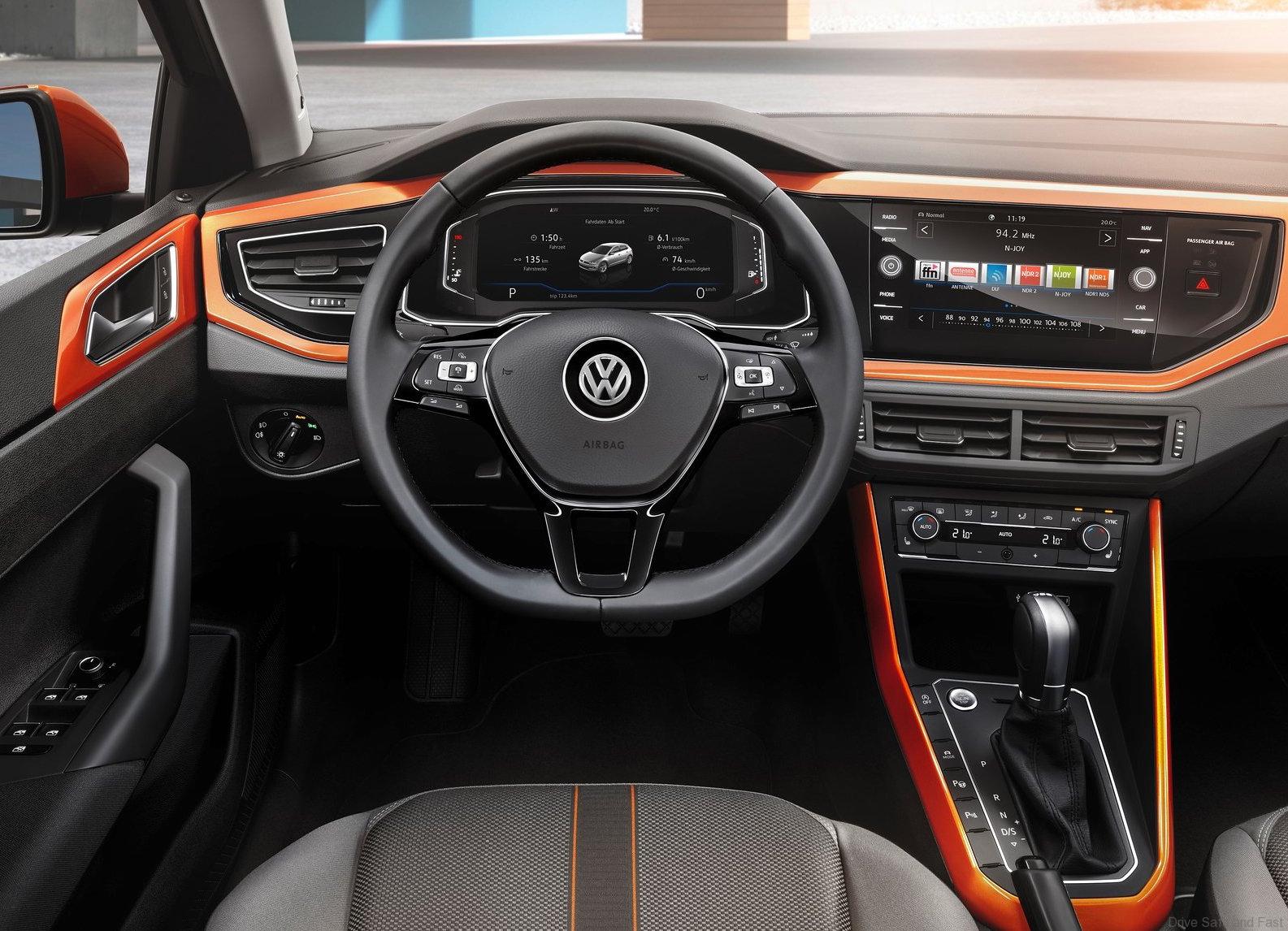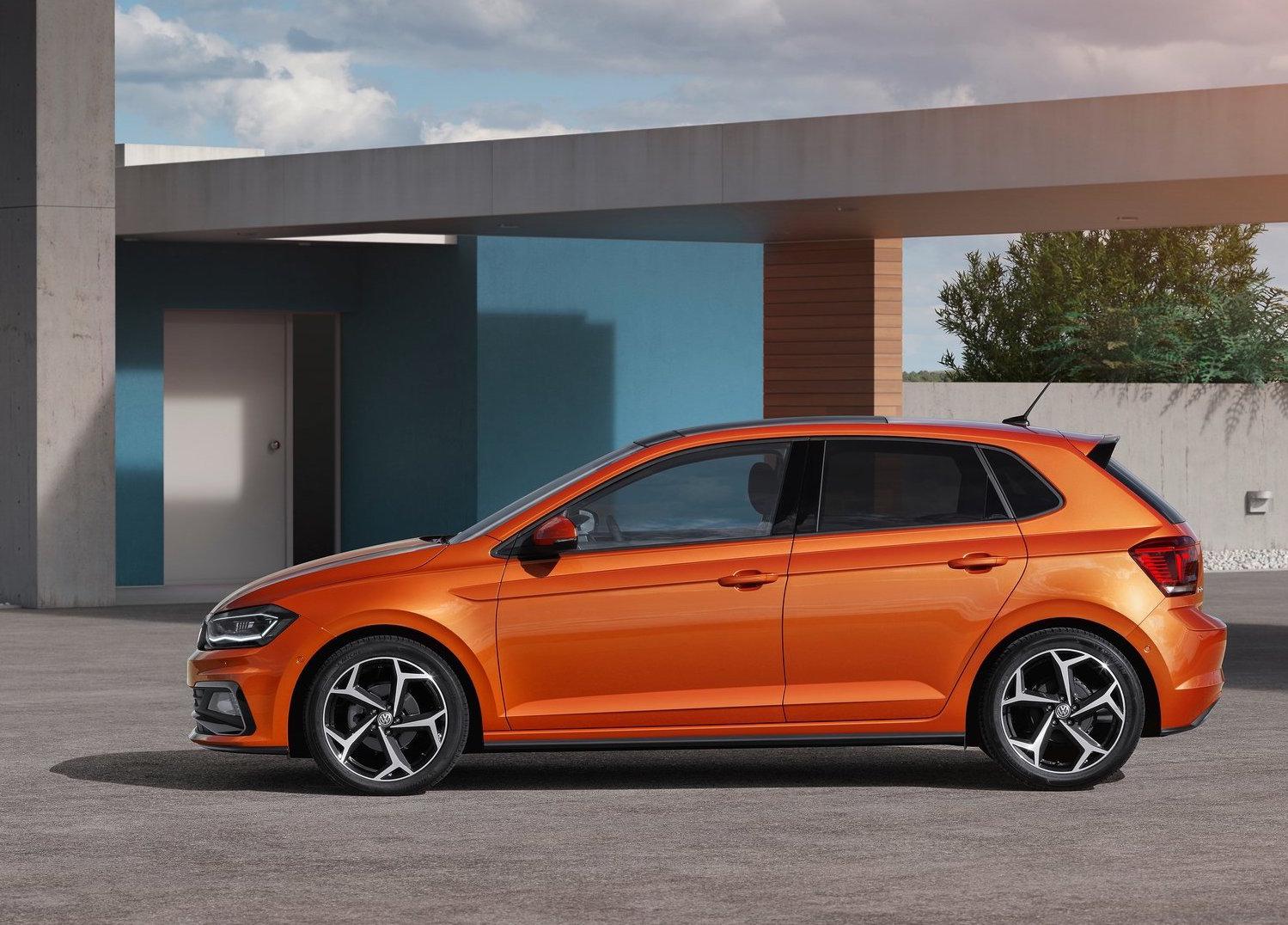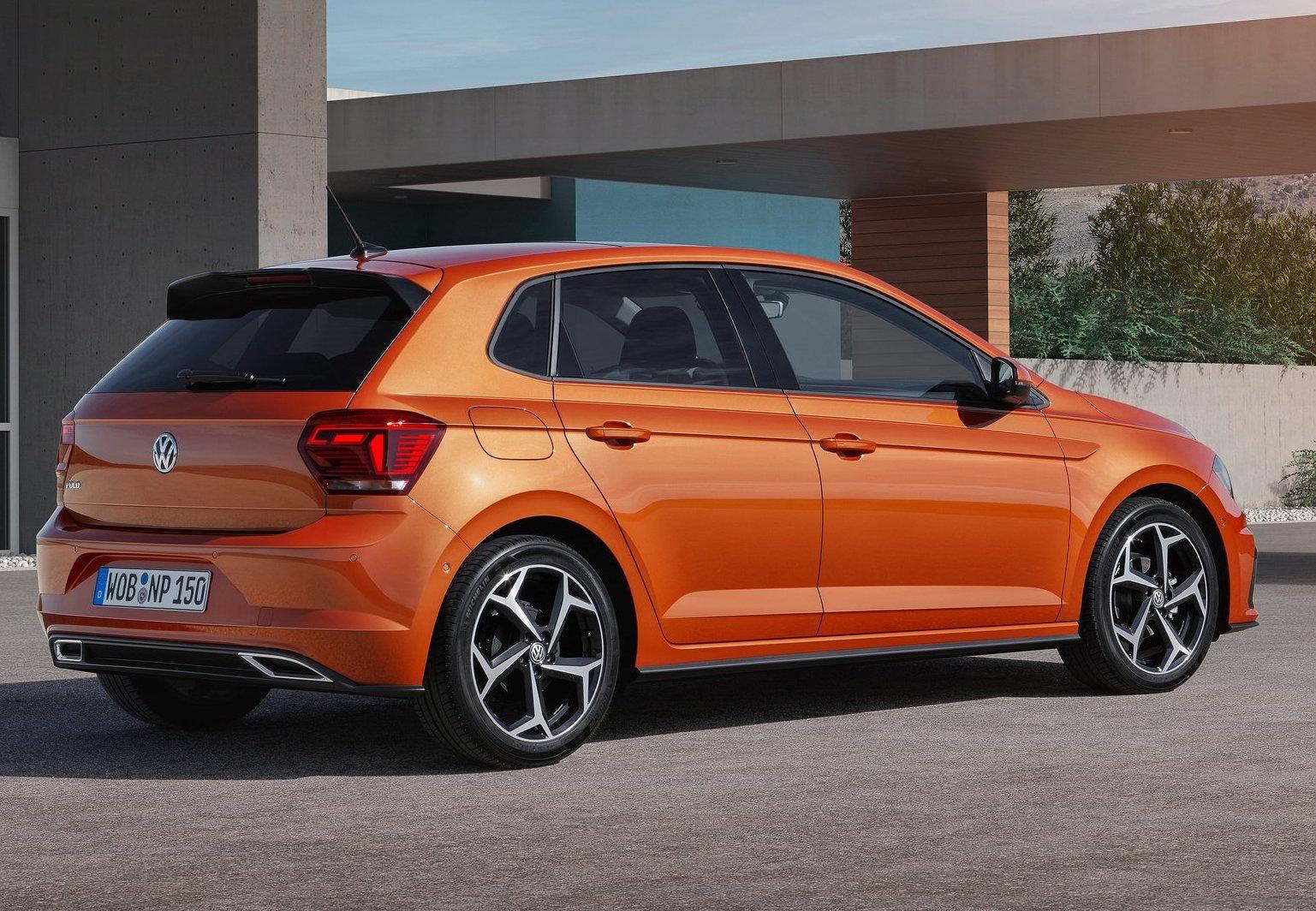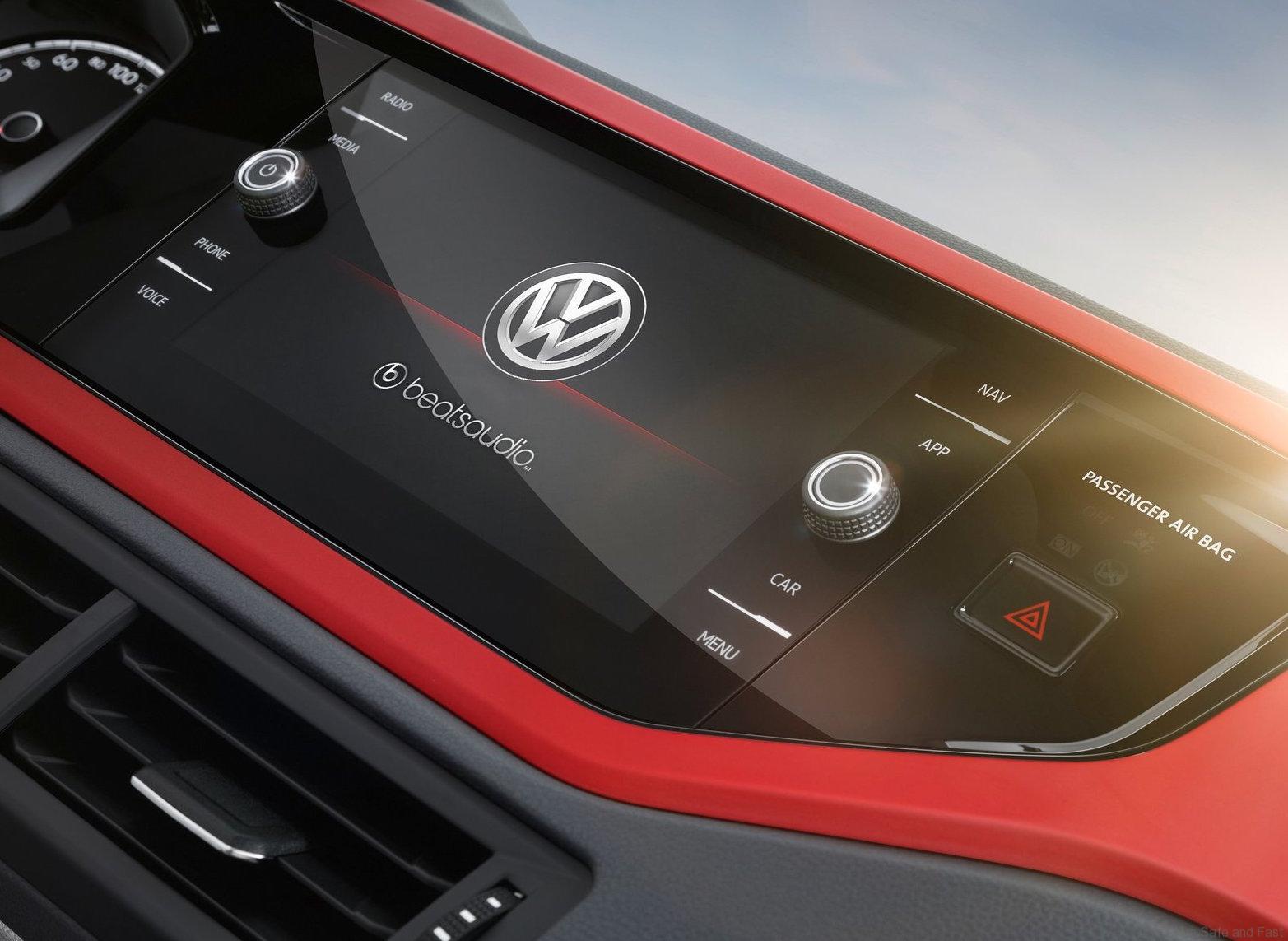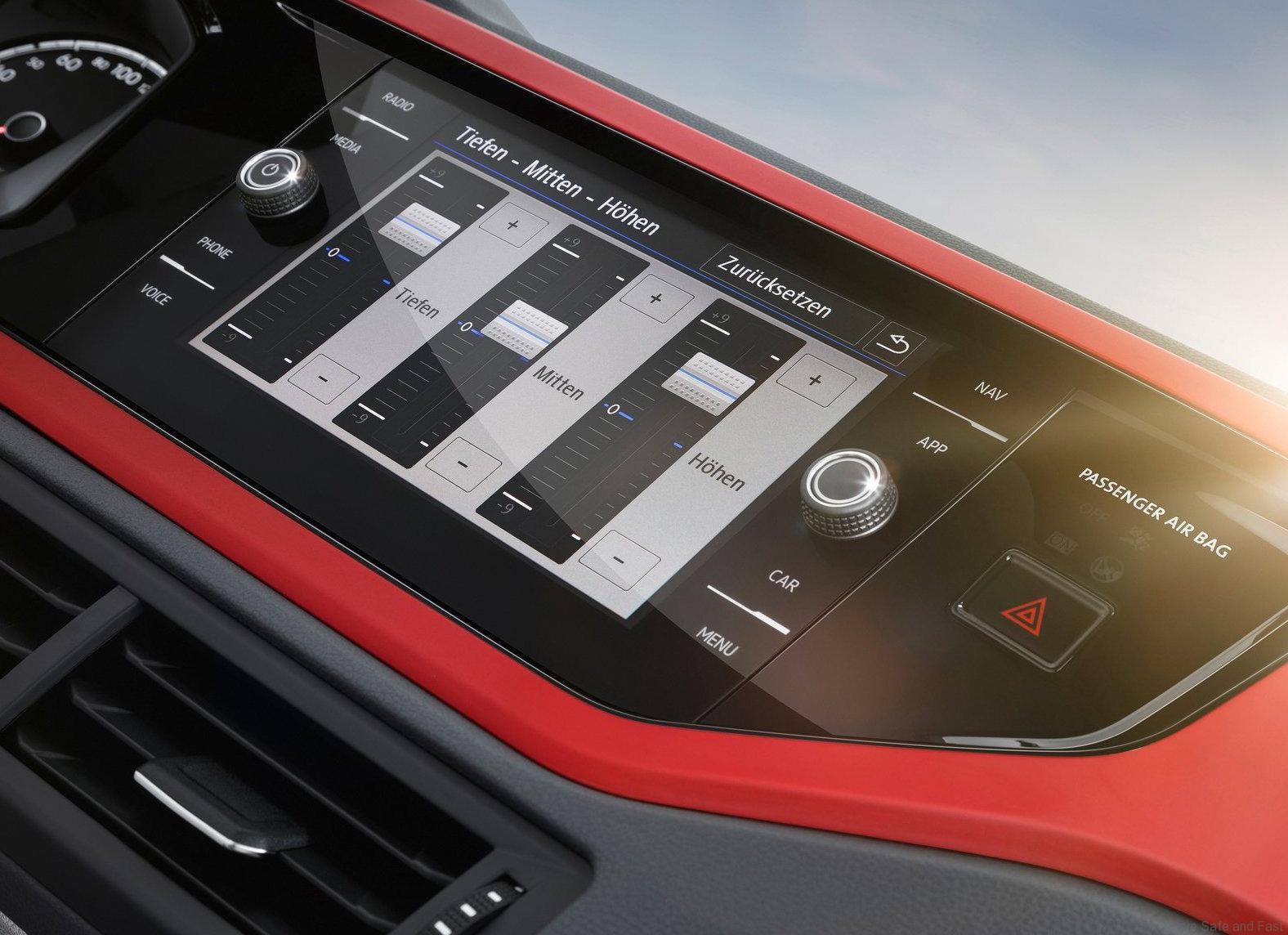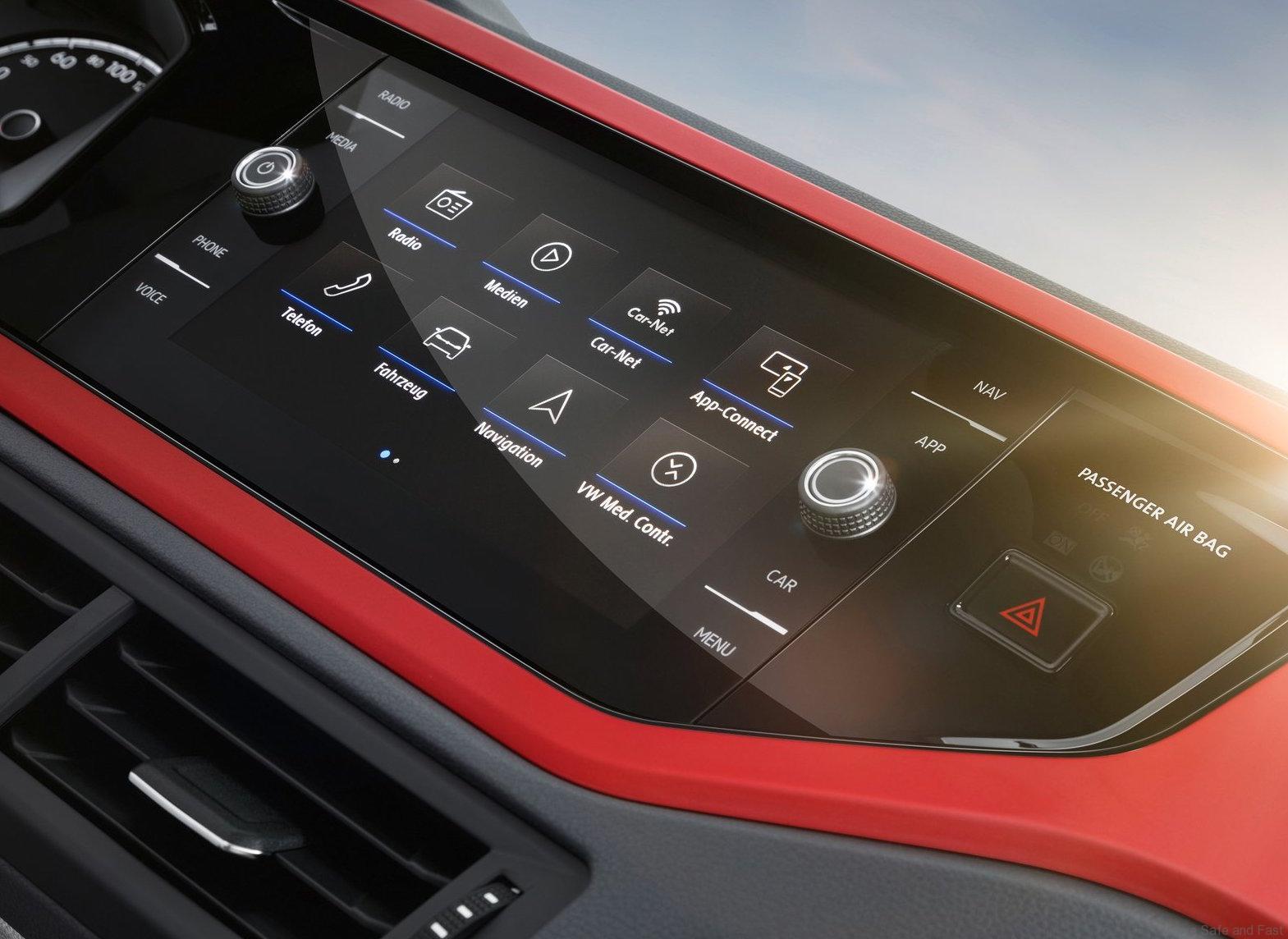With more than 14 million units sold, it is one of the world’s most successful compact cars: the Volkswagen Polo. Now a completely new generation of the best-seller is launching. With an entirely new exterior design, noticeably more spacious interior that has also been redesigned down to the last detail, new cockpit layout structured for the digital world, efficient TSI (petrol), TGI (natural gas) and TDI (diesel) engines1/2 as well as an array of assistance systems which previously was only familiar in larger Volkswagen cars. Dr Herbert Diess, Chairman of the Board of Management for the Volkswagen brand: “The Polo is a young, fresh car. It combines charisma with strong technology. No other car offers so much space for its size. This makes our Polo the number one compact, and it will remain number one.”
Digital instruments, new information and assistance systems
Dr Frank Welsch, Board Member for Development of the Volkswagen Brand: “The new Polo brings the future to the compact class. A whole lot of space – based on the modular transverse matrix – sustainable engines like a new natural gas TGI, the world premiere of a new generation of the Active Info Display, the latest infotainment systems and forward-thinking assistance systems – these qualities enable this Volkswagen to overcome traditional class boundaries.”
Much more interior space, yet still compact outside
The sixth generation Volkswagen Polo has grown, making it larger than its predecessor in all of its dimensions. This has resulted in much more interior space and a significantly increased boot volume, which has grown from 280 to 351 litres. Nonetheless, it is still a snappy compact car on the outside. It is enlightening to compare this car to the fourth generation Golf (built until 2003) which has sold in the millions. It shows that the Polo has adapted to people who have grown, but also that it utilises its enclosed space even more effectively. The new Polo, with its length of 4,053 mm, is slightly shorter than the fourth generation Golf, but it surpasses that Golf when it comes to its wheelbase (53 mm longer) and space for the driver, passengers and luggage (21 litres more).
Crystal-clear charisma
The positive effects of the modular transverse matrix (MQB) on the car’s proportions, and thereby on its design, are very significant. Klaus Bischoff, Head of Design for the Volkswagen Brand, explains: “The much better proportions create the framework for a grown-up, confident appearance of the sixth generation Volkswagen Polo – charismatic, progressive, contemporary and friendly. We have systematically capitalised on this realignment of dimensions to build a compelling compact car.” The project targets, as defined by Bischoff: All Polo models should be made more sporty, more powerful, fresher, more masculine and more charismatic. Looking at the new Polo, the Head of Design sums it up: “This Volkswagen can immediately be made out as the original of its class, but also as a completely new generation. A Volkswagen Polo with an expressive design which makes the compact – now as a four-door only – sportier, cleaner and unique within the brand range. This is a car that fits in perfectly with our times – both visually and technologically.”
Five equipment versions and three packages
The Polo is launching in three familiar trim lines Trendline, Comfortline and Highline, and in the ‘Beats’ special edition with a sound system configured for contemporary sound. Another version that appears from the start on the new car’s life: the Polo GTI. Several packages are also being offered in the form of R-Line, Black and Style. All three have a lot to offer. Consider the R-Line: it makes the VW Polo even more dynamic with such features as 16-inch alloy wheels (‘Sebring’), a big, sporty front bumper and at the rear a diffuser with chrome trim and a roof spoiler. The Polo with an R-Line package also has wrap-around black sill trim strips which visually press the car down to the road. The R-Line package also upgrades the interior completely – adding dynamism at a low additional price.
Trendline
Even the base version of the new Polo, the Trendline, is well equipped and has standard features such as LED daytime running lights with coming-home and leaving-home functionality, a speed limiter and the Front Assist area monitoring system with City Emergency Braking and Pedestrian Monitoring. These are all features that confirm safety does not allow for any compromises. On the Volkswagen Polo Trendline, power is transferred to the road via 14-inch wheels. The base price of the Polo Trendline is 12,975 euros in Germany – this represents a significant price advantage compared to the previous model when the price is adjusted for now standard options such as the rear doors and the area monitoring system that is included free-of-charge.
Comfortline
At the Comfortline trim level, additional details are added such as the Composition Colour infotainment system, air conditioning (Climatic), Driver Alert system, centre armrest, seat covers in knitted velvet, front and rear electric windows with one-touch control, and a multi-function steering wheel. Also standard: 15-inch wheels.
Highline
Customers who choose the Highline also get Park Distance Control (PDC), white LED background lighting (front doors and instrument panel), multifunction steering wheel in combination with leather-trimmed gear shift lever and brake lever (‘small leather package’) and 15-inch alloy wheels (‘Salou’).
Beats
A new edition of the successful Polo Beats has been designed, which targets younger customer groups. It has a 300-watt sound system by legendary US headphone producer Beats (Dr. Dre) as well as a host of other features. Exterior features include 16-inch alloy wheels, black painted exterior mirror housings, decorative decals on the bonnet and roof and ‘Beats’ badging on the B-pillars. Inside, the ‘Beats’ model is customised with such features as a dashpad painted in ‘Velvet Red’, sport seats with specially designed covers and ‘Beats’ logo, the ‘small leather package’ and special sill panel trims. The sound system can be ordered as an option in other models.
GTI
Rounding out the model range at the top, as already noted, is the new Volkswagen Polo GTI. This sporty top model will now be powered by a 2.0-litre TSI with an output of 147 kW / 200 PS (previous model: 1.8 TSI with 141 kW / 192 PS). Matching the engine’s high output are the standard sport chassis and the optional Sport Select chassis. At the front, this most powerful Polo stands out by virtue of such features as a specially designed bumper with integrated spoiler lip and fog lights as standard. Typical GTI insignia at the front include the red stripe on the radiator grille, honeycomb air vent screens and, of course, the GTI badge. An exclusive feature offered in the GTI: optional LED headlights with a red winglet; stylistically they are extensions of the red stripe of the radiator grille. At the rear, the Volkswagen Polo GTI sports a large roof spoiler in high-gloss black (underside: black matt), a diffuser in the bumper, GTI-specific dual tailpipes (left side), LED tail lights and, again, the GTI badge. On the sides, GTI characteristics include standard 17-inch alloy wheels (18-inch optional), side sill extensions and brake calipers that are painted red. In the interior, the 200-PS Polo also offers unique characteristics that are typical of a GTI. They include top sport seats with the legendary ‘Clark’ tartan pattern, a multifunction leather-trimmed sport steering wheel with red stitching, rooflining and roof pillars in black and a GTI gear shift grip. Also included as standard: ambient lighting.
14 exterior colours
Everything becomes more colourful and personalised in new VW Polo with a large range of fresh new colours (a total of 14 exterior colours are available) and twelve wheels (14- to 18-inch, some painted in contrasting colour), dashpads in 13 different decors, two interior trim versions and eleven different seat covers.
Comfort & convenience features from the Golf class
The Polo can be further personalised and upgraded to satisfy individual budgets and tastes. New in the options programme are features such as light-intense full-LED headlights, LED daytime running lights, LED tail lights, ‘Air Care Climatronic’ system with air quality sensor and allergen filter, wireless charging for smartphones (optional inductive aerial connection) and one of the largest panoramic roofs in its class (opening is 10 mm wider and 20 mm longer than before). Another available option: the Sport Select running gear with active dampers. The new Polo can be personalised to create an almost unique car by choosing from different trim lines, colours, interiors, wheels and optional features. These options may also be combined with a broad range of highly efficient engines.
Market launch in 2017
The new Volkswagen Polo will arrive on the markets of most European countries in 2017, and it will launch successively with nine Euro-6 engines. The power range at market launch: 48 kW / 65 PS to 110 kW / 150 PS. For the first time, the Polo is available with a natural gas engine: the newly developed 1.0 TGI with an output of 66 kW / 90 PS. Four petrol and two diesel engines are also available. The petrol engines range from the 1.0 MPI with 65 PS to the brand new 1.5 TSI EVO with cylinder deactivation (ACT) and 150 PS. The Polo is launching with diesel versions (TDI) with outputs of 59 KW / 80 PS and 70 kW / 95 PS. All of these models are equipped with a stop-start system and a regenerative braking mode. Starting from an output of 70 kW, all engines may be combined with a dual clutch gearbox (DSG). The GTI rounds out the range of the Volkswagen Polo family as a highlight. As previously noted, the TSI in the Polo GTI develops an output of 147 kW / 200 PS.
Assistance systems from the Golf and Passat in the Polo
In producing the new Polo, Volkswagen has put one of the world’s most advanced compact cars on wheels. This is reflected in such advanced features as the array of new assistance and convenience systems – systems that were previously reserved for the Golf, or even the Passat, class. As already noted, even the base version of the new Polo is launching with the Front Assist area monitoring system including City Emergency Braking and Pedestrian Monitoring as standard. One option that is being offered again in the Volkswagen Polo is Adaptive Cruise Control (ACC; can now be activated up to a speed of 210 km/h). In conjunction with a dual clutch gearbox (DSG), ACC also offers a Stop & Go function (for first time with a manual parking brake). New options in the Polo are the Blind Spot Detection lane change system with Rear Traffic Alert, the semi-automated Park Assist system for exiting parking spaces and a ‘manoeuvring function’. The latter automatically protects against minor but often expensive parking dents. The optional Keyless Access locking and engine starting system, which is also new, can be used to unlock and start the Polo.
New interior in harmony with the digital world
Interior and HMI (human-machine interface) designers created a new, clean interior layout in order to locate the digital and connected displays and controls on a continuous visual axis that is as high as possible and thereby optimally visible to the driver. Background: The VW Polo will launch as the first Volkswagen and the first Volkswagen Group model ever to offer this new generation of the Active Info Display. The functionality of the digital instruments reaches a new peak; just like the graphics, everything is clearer and easier to use. For the first time, just one button on the multifunction steering wheel is used to switch between the basic Views menus, for instance. At the same time, the Volkswagen Polo is getting the latest generation of infotainment systems with display diagonals ranging from 6.5 to 8.0 inches – glass-encased devices that are as sophisticated as high-end smartphones. The clean, high-tech image of the interior is reinforced by background lighting (standard equipment in Polo Highline and GTI) as well as by dashpads and decorative trim strips in a wide variety of colours.
‘We by Volkswagen’ launches
Volkswagen is also forging new paths in the area of connectivity. Not only are the ‘App Connect’ Car-Net applications (with MirrorLinkÒ, Android Auto™ and Apple CarPlay™) and ‘Guide & Inform’ available in the Polo. Now there is also the new ‘We by Volkswagen’ – a digital user platform from Volkswagen for all drivers. ‘We by Volkswagen’ will open up another online level of mobility. One example is the app-based ‘WePark’, a cashless payment service for parking: in the German capital Berlin, this feature will already be a reality at the time of the Volkswagen Polo world premiere. Other large German cities such as Hamburg and Cologne will follow the example of Berlin and launch ‘WePark’.
Polo embodies the brand’s four fields of innovation
The new Polo was developed based on the latest Volkswagen brand strategy with its four fields of innovation. This strategy is known by the motto: “We make the future real.” The Polo DNA develops its product characteristics via these fields of innovation.
Automated Driving – Volkswagen wants to make cars even safer, more convenient and more comfortable by means of automated driving or semi-automated systems.
Intuitive Usability – Volkswagen focuses on cars that are intuitive to operate and feature new display and control concepts.
Connected Community – Volkswagen will interconnect humans, cars and their surroundings more intensively than ever in the future.
Smart Sustainability – Volkswagen is advancing the development of innovative high-volume models with sustainable drives.
Progressive compact car
The new Volkswagen Polo is precisely following this roadmap, with Volkswagen Research & Development as its compass. It has led to one of the most progressive cars in its class based on the four fields of innovation: Automated Driving, Intuitive Usability, Connected Community and Smart Sustainability.
The assistance systems of the new Polo
Volkswagen has integrated a new generation of assistance systems into the Polo. These are systems which were adapted from larger car classes and are being further democratised by their use in the Polo.
Front Assist / City Emergency Braking / Pedestrian Monitoring
They include the Front Assist area monitoring system with City Emergency Braking and Pedestrian Monitoring. In the new Volkswagen Polo, it comes as standard in even the Trendline base version. Its automatic warning and braking functions contribute towards avoiding frontal collisions on highways, secondary roads and in the city. Another system that is already included in the Polo Trendline as standard: a speed limiter, which can limit the car’s driving speed to a desired figure, e.g. to avoid going too fast in the city. The Tyre Pressure Monitoring System is also always on board a new VW Polo.
ACC / Blind Spot Detection / Rear View
Volkswagen is offering the Polo with an optional Adaptive Cruise Control (ACC) system (up to 210 km/h; with DSG it includes the Stop & Go function as well). Another option new in the Polo: Blind Spot Detection including Rear Traffic Alert. ACC is a smart cruise control based on radar, which automatically brakes and accelerates according to the traffic situation. The Blind Spot Detection lane change system gives a warning in the exterior mirror if vehicles are located in what is known as the blind spot during overtaking. Meanwhile, Rear Traffic Alert assists in reversing out of parking places, because it can detect vehicles in cross traffic behind the car. If it detects a hazard, the system warns the driver here too, and it even brakes if necessary.
Park Assist with manoeuvring braking function
Another automated technology from a higher vehicle class is the Park Assist system; it automatically guides the car into nearly any conceivable parking space. This means that the Volkswagen Polo steers, and all the driver needs to do is brake and accelerate. The new ‘manoeuvring braking function’ assists in an extremely practical way, especially in the city. It is active during parking at speeds of up to 10 km/h, and it brakes automatically as soon as it detects obstacles such as the infamous bollard. This saves on repair costs, and aggravation.
Digitalised cockpit of the new VW Polo
Volkswagen cars are cars that are intuitive in operation. However, the exponential growth of digital systems in the car and their continually increasing number of functions pose new challenges for preserving this intuitive operation in the future. This, though, has been assured in the new Polo. The interface engineers and interior designers have reassessed the interior, analysing and reorganising it from the perspective of tomorrow. This has led to an interior which will be considered a frontrunner for years to come.
One visual and control axis
Everything is located where it should be in a world with analogue and digital functional elements. The interior specialists have therefore created a new visual and control axis in the Polo. Instruments and infotainment are increasingly merging onto one level. The designers and engineers accomplished this by positioning the infotainment system display high up and the air vents and air conditioning controls beneath them. As a result, the driver has a better view than ever of the cleanly designed displays and controls. The digital world is making its way into the Polo in the form of glass-encased infotainment systems, fully digital and newly designed instruments (Active Info Display), wireless interfaces for smartphones (including wireless charging) and the Keyless Access automatic locking and engine starting system.
Infotainment & Active Info Display
A whole new generation of infotainment systems is being used in the Volkswagen Polo. With glass-covered surfaces and digital operation that is more powerful than before. Even the Polo Comfortline has the Composition Colour infotainment system with a 6.5-inch display as standard. Also new, and a novelty in the segment: the optional new generation of the Active Info Display. The digital instruments offer more information, a more logical structure, even more graphic clarity and more joy in operating them. Now, one button on the steering wheel can be used to activate different graphic menus quickly, for example. A digitalised level is created, especially in combining infotainment and the Active Info Display. On this level, it is very easy to ‘drag’ functions such as the play list or phone contacts from the infotainment system display to the screen of the Active Info Display.
Wireless Charging & Keyless Access
Along with the classic way of supplying power to smartphones by cable, in the new Polo it is also possible to do this via an optional inductive interface (for compatible phones). The interface is located beneath the air conditioning controls. The smartphone can also be connected to an external aerial via the ‘Deluxe’ phone interface. Right in front of it is the ‘Start engine / stop engine’ button for starting or stopping the engine without a key. This is a function of Keyless Access, the first keyless locking and engine starting system to be offered in the Polo.
Engines of the new Volkswagen Polo
Sustainable drives are the core of the Smart Sustainability field of innovation. They might be battery-electric systems such as in the e-up!, plug-in hybrids like in the Golf GTE or innovative new engines with conventional or alternative fuels. That is true of the Polo, too. Volkswagen is equipping the compact car with a natural gas drive for the first time: the entirely new 1.0 TGI with 66 kW / 90 PS can actually be CO2-neutral, depending on the energy source. It is one of a total of nine Euro-6 engines available for the Polo, which always has front-wheel drive. The five petrol engines range from the 1.0 MPI with 48 kW / 65 PS to the new 1.5 TSI EVO with 110 kW / 150 PS and cylinder deactivation (ACT). The drive systems are rounded out by a sixth petrol engine, the GTI engine that is a 2.0 TSI with 147 kW / 200 PS. As a diesel, the Volkswagen Polo will launch with a choice of two 1.6 TDI engines whose outputs are 59 kW / 80 PS and 70 kW / 95 PS, respectively. Both TDI models have an SCR catalytic converter. All Polo engine variants come equipped with a stop-start system and a regenerative braking mode as standard. Overview of the entire line-up of drive versions:
Natural gas
1.0 TGI with 66 kW / 90 PS, 5-speed gearbox
Petrol
1.0 MPI with 48 kW / 65 PS, 5-speed gearbox
1.0 MPI with 55 kW / 75 PS, 5-speed gearbox
1.0 TSI with 70 kW / 95 PS, 5-speed gearbox / 7-speed DSG
1.0 TSI with 85 kW / 115 PS, 6-speed gearbox / 7-speed DSG
1.5 TSI with 110 kW / 150 PS, 6-speed gearbox / 7-speed DSG
2.0 TSI with 147 kW / 200 PS, 6-speed gearbox / 7-speed DSG
Diesel
1.6 TDI with 59 kW / 80 PS, 5-speed gearbox
1.6 TDI with 70 kW / 95 PS, 5-speed gearbox / 7-speed DSG

